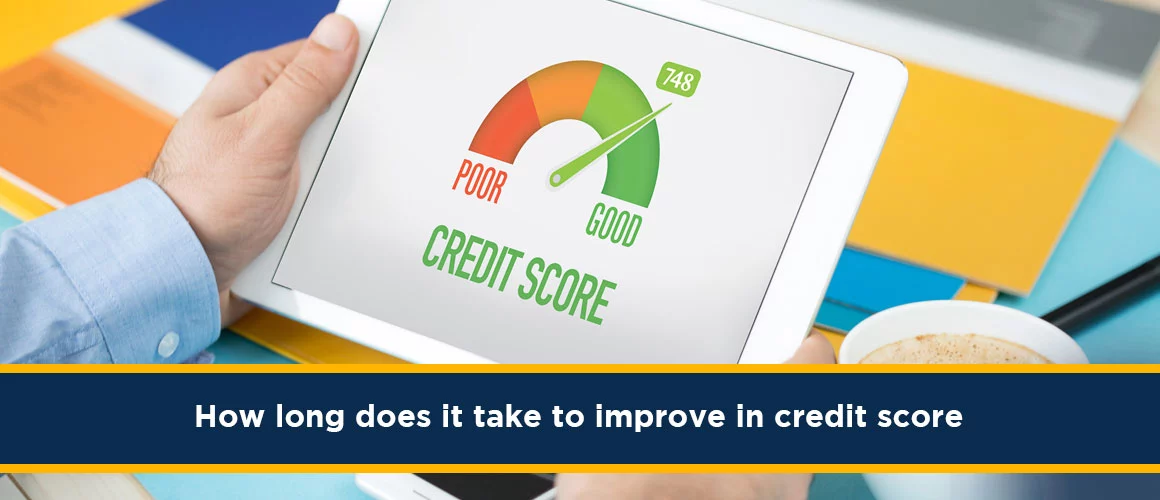Pay for Delete Letter: Improve Your Credit Score Today

Are you feeling weighed down by bad marks on your credit report? A low credit score can make it hard to get loans, rent a place, or find a job. It takes time to fix your credit, but a delete letter might provide a faster option. This approach means talking with your creditors to remove negative information from your credit report in return for a payment.
Understanding Pay for Delete Letters
A pay-for-delete letter is a formal note you send to a creditor. In this letter, you offer to pay off a debt, either fully or partially, in exchange for them removing the bad mark from your credit report. This can make it easier to fix your credit.
But you should know that asking for a pay-for-delete letter has some risks. Creditors are not required to agree to these requests. Many of them have agreements with credit bureaus that focus on showing accurate information, which makes them less likely to agree to remove such entries.
The Basics of the Pay-for-Delete Strategy
A pay-for-delete letter aims to remove negative information from your credit report. Credit bureaus like Equifax, Experian, and TransUnion collect your credit history. This history helps determine your credit score. If you don't pay a debt, it may be sold to a collection agency. That agency will then report your missed payments to the credit bureaus.
A pay-for-delete letter can help in this situation. It allows you to talk directly to the collection agency. You can negotiate an agreement to have them take off the negative mark from your credit report in return for a one-time payment. This amount is often less than what you owe.
While it sounds good to quickly raise your credit score, you need to keep your expectations realistic. A pay-for-delete letter is a way to negotiate, but it's not a sure fix. Creditors want to report accurately. If they frequently remove correct negative information, it might hurt their reputation with the credit bureaus.
How Pay for Delete Affects Your Credit Score
Negative information, like late payments or collections, can hurt your credit score. A pay-for-delete letter might help remove these issues from your credit report. If it works, it can lead to a better credit score. By paying off the debt and getting the negative mark taken off, lenders may see you as less of a risk.
How much your credit score improves depends on a few things, including the scoring model used. Newer models, such as FICO 9 and VantageScore 3.0, often ignore paid collections. This means a pay-for-delete letter may not make much difference.
Older scoring models are still used by many lenders. They might still count paid collections. So, pursuing a pay-for-delete letter could be worth it based on your credit situation and the models used by the lenders you look at.
Crafting an Effective Pay-for-Delete Letter
To write an effective pay-for-delete letter, you need to be clear, professional, and strategic. Your letter must clearly explain what you want while keeping a respectful tone. A good structure will boost your chances of getting a positive response.
Keep in mind that you are in a negotiation. You should present strong reasons that highlight the benefits for the creditor, while clearly stating what you want to achieve.
Essential Elements to Include in Your Letter
Start your letter with your full name and address. Next, write the date and the information of the collection agency. Mention your account number and the payment amount you are offering. Also, say the original creditor's name to make sure they are working with the correct debt.
Add a strong statement to say you are disputing the debt. Request validation, especially if you have not gotten any proof. This request is under the Fair Debt Collection Practices Act. If the agency can't show evidence, it might lead to the debt's removal without you needing to pay.
At the end, explain the terms of your agreement. Say that your payment depends on completely removing the negative information from all credit bureaus within a set time, usually 30 days. Ask for a written agreement on company letterhead. This document should be signed by an authorized representative and confirm the terms before you send the payment.
Persuasive Strategies to Enhance Approval Chances
While you write your letter, think about these tips to improve your chances of convincing the debt collector:
-
Offer a Strong Settlement: Offering a payment closer to the total amount owed can get their attention.
-
Highlight Extenuating Circumstances: If something like losing your job or a medical emergency caused the debt, explain this briefly.
-
Propose a Win-Win Situation: Talk about how settling the debt is good for both sides. They get paid, and you can improve your credit report.
Keep in mind that a good letter doesn’t always mean approval. If they say no at first, think about sending a goodwill letter. This letter should explain your situation and ask for the removal of the debt based on your goodwill.
Navigating the Process After Sending Your Letter
After you send your delete letter by certified mail, it's important to be patient. Give the creditor enough time to check your request and reply. Don’t keep contacting them, as it may slow down their decision.
Waiting for a response can be hard, but know that you have taken a step towards fixing your credit. If your first try doesn’t work, there are other ways to deal with the negative information on your credit report.
Steps to Take if Your Pay for Delete Request is Accepted
When you get confirmation that your request is accepted, check if the agreement matches your terms. Look closely at the payment amount, the time frame for deletion (preferably within 30 days), and the requirement for removing the entry from all credit bureaus.
Send your payment through a traceable method, like a cashier's check or a money order. Keep copies of everything, such as the signed agreement, your payment receipt, and the return receipt from your certified mail.
After the deletion period is over, order free credit reports from the three credit bureaus — Equifax, Experian, and TransUnion — to check that the negative information is gone. If it’s still there, contact the creditor right away and share copies of your documents.
How to Respond to a Rejection of Your Pay for Delete Letter
Don't worry if your request gets turned down. You can find other ways to fix the issue. If the debt collector won't agree to your pay-for-delete offer, think about setting up a payment plan. This can help you pay off the debt and improve your credit over time.
You can also send a debt validation letter. This letter asks for proof that the debt is real. You have the right to challenge any mistakes in their records. If they do not provide the validation by the response deadline, they must remove the debt from your credit report.
Keep in mind that being denied does not mean you have failed. Use helpful resources, like credit counseling services, to find more options and create a plan for credit repair.
Pros and Cons of Using Pay for Delete Letters
A pay-for-delete letter can help with credit repair, but it's important to think about the good and bad sides before you decide. Knowing both sides helps you make a smart choice based on your credit situation.
By looking at the possible benefits and risks, you can make sure you choose a path that fits your financial goals.
Advantages of Pay-Per-Delete Letters for Credit Repair
Pay-for-delete letters, when successful, offer a faster path to credit repair compared to waiting for negative information to naturally fall off your credit report. This strategy allows you to take immediate action, potentially boosting your credit score and improving your chances of accessing favorable credit terms in the future.
Negotiating with creditors can empower you to settle debts for less than the total amount owed, saving you money in the long run. Moreover, asserting your rights under the Fair Credit Reporting Act, like requesting debt validation, grants you leverage and ensures your credit report reflects accurate information.
| Advantages | Description |
| Faster Credit Repair | Removes negative marks sooner than waiting 7-10 years. |
| Potential Savings | Negotiate lower settlement amounts, reducing overall debt. |
| Consumer Rights | Utilize legal protections under the Fair Credit Reporting Act. |
Potential Drawbacks and Risks Involved
Paying for deleted letters can have some benefits, but they also come with some problems. The main issue is that creditors do not have to accept your offer. They can just say no and leave you where you started.
Also, if a creditor agrees to take off the negative mark, it does not mean the original debt or late payments are gone from your credit history. This information could still be seen by lenders in certain reports. Some newer scoring models also look at paid collections, which can reduce how helpful a deletion is.
Lastly, there's a chance that a creditor could back out of their deal after they get paid. You could try to take them to court, but enforcing the agreement can be hard. It is important to think about these risks compared to the possible rewards before choosing this path.
Real-Life Success Stories and Lessons Learned
To understand how well the delete letters works, we need to look at examples of where this method succeeded and where it did not. Real-life stories give us useful insights into the details of this practice.
By looking at both the successful and failed cases, we can create realistic expectations. This can help you shape your strategy and may improve your chances of getting good results.
Case Studies of Successful Pay-for-Delete Negotiations
Many examples show that pay-for-delete negotiations can work well. People with small debts, like medical or utility bills, often use this method to remove bad marks from their credit reports. This helps them boost their credit scores.
These wins usually happen with debts recently sold to collection agencies. These agencies might be more open to accepting smaller payments. The success also depends on the credit score calculations that lenders use. Older models might view paid collections less badly than newer ones, which means removing them can have a bigger effect.
However, it's important to understand that not everyone will see the same results. The practice of paying for deletion is somewhat unclear legally. Its success can change based on the creditor, how much the debt is, and how credit reporting is done.
Key Takeaways from Failed Attempts
Success stories can inspire us, but learning from failures is just as important. Many people want a quick fix. They turn to credit repair companies that promise to delete their debts, but they often end up disappointed. It’s essential to know that no company can guarantee a creditor will accept their offer.
Sometimes, the right letter can make a difference. Using vague words, begging, or not mentioning the exact amount due can lead to a rejection. A debt collector wants a clear deal that benefits both sides. If you don’t provide that, you might hurt your chances.
Also, there’s a risk that creditors won’t follow through on agreements. Even if you have a signed agreement, the creditor might still not remove the negative mark. You can consider legal action, but it often takes time and brings uncertainty. This makes it vital to think carefully before choosing this path.
Conclusion
Improving your credit score with pay-for-delete letters can be a smart choice for your financial future. It is important to know how the process works, write strong letters, and understand the responses you get. Pay for deletion can help repair your credit, but there are some risks involved as well. Hearing real-life success stories can motivate you, and learning from failed attempts can teach you valuable lessons. By looking at these factors, you can make better decisions about your credit repair. Remember, every situation is different. Getting professional help can also boost your chances of success. Keep in mind that managing your finances well can lead to a better credit score.



